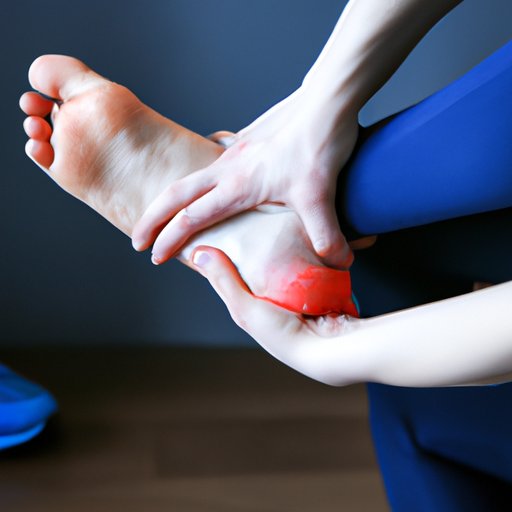
How to Stop Foot Cramps: Tips and Strategies
Have you ever experienced a sudden, painful cramp in your foot that seems to come out of nowhere? Foot cramps are a common problem that can be caused by a variety of factors including dehydration, muscle fatigue, poor circulation, and certain medical conditions. While they may seem like a minor nuisance at first, severe or chronic foot cramps can be a serious issue that affects your daily life. Fortunately, there are several strategies you can use to prevent and stop foot cramps.
Importance of Hydration
One of the most common causes of foot cramps is dehydration. Your muscles, including those in your feet, depend on adequate hydration to function properly. When you become dehydrated, your muscles can become tight, which can lead to cramping. To prevent dehydration and reduce your risk of foot cramps, it’s essential to drink enough fluids throughout the day.
You can stay hydrated by drinking water, electrolyte-rich sports drinks, or other healthy beverages. It’s especially important to drink enough fluids before and after activities that may cause sweating or dehydration, such as exercise or working outside in hot weather.
Stretching Exercises
Stretching exercises are another effective way to prevent and alleviate foot cramps. Tight muscles are more prone to cramping, so stretching can help keep your muscles loose and relaxed. There are several stretches that can be particularly helpful for preventing foot cramps, including:
- Toe curls: Sit with your feet on the floor and curl your toes under, holding for 10-15 seconds.
- To stretch your calf muscles, stand a few feet away from a wall and place your hands on the wall. Step your right foot back and keep your left leg bent. Lean into the wall to feel a stretch in your right calf. Hold for 30 seconds and switch sides.
- Using a towel or resistance band, sit with your legs stretched out in front of you and loop the band around the ball of your foot. Gently pull back on the band to stretch your foot and calf muscles.
- Roll a tennis ball under the arch of your foot, applying gentle pressure. This can help release tension in your foot muscles.
It’s important to stretch properly to prevent injury and get the most benefit from your exercises. Avoid bouncing, hold each stretch for at least 10-15 seconds, and don’t push yourself too hard.
Massage
Massage can be another helpful strategy for reducing foot cramps. A massage can help relax your muscles and improve circulation to your feet, reducing the likelihood of cramping. You can get a professional massage, or you can do it yourself at home.
To self-massage your feet, sit in a comfortable chair and apply moderate pressure to your foot with your thumbs or fingers. Work your way from your heel to your toes, making small circular motions. You can also use a tennis ball or foam roller to massage your feet.
To get the most benefit from your massage, try to do it regularly and be consistent in your technique.
Shoes & Inserts
Wearing comfortable, supportive shoes can also help prevent foot cramps. Shoes that have proper arch support and are not too tight or too loose can help keep your feet in a stable position, reducing the risk of cramps. You can also consider using special inserts or orthotics if you have specific foot issues that may contribute to cramping, such as flat feet or high arches.
If you are not sure what types of shoes or inserts are best for you, visit a shoe store or podiatrist who can provide guidance and recommendations.
Medical Information
While foot cramps are usually not a cause for alarm, persistent or severe cramps could be a sign of an underlying medical condition. Some medical issues that can cause foot cramps include:
- Dehydration
- Peripheral artery disease
- Diabetes
- Neuropathy
- Thyroid issues
If you are experiencing frequent or severe foot cramps, it’s a good idea to talk to your doctor. They can rule out any underlying medical issues and provide you with further advice on how to manage your symptoms.
Conclusion
Foot cramps can be a frustrating and painful problem, but there are several strategies you can use to prevent and alleviate them. Staying hydrated, doing stretching exercises, getting a massage, wearing comfortable shoes, and seeking medical advice if necessary can all help reduce your risk of foot cramps. With the right approach, you can effectively address this issue and get back to enjoying your favorite activities.





